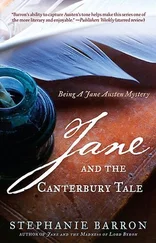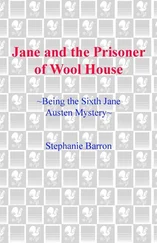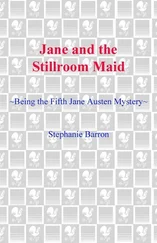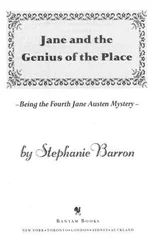The Buddie was the name given to the mouth of the Lym river, from which Lyme derives its name. — Editor's note.
Austen here describes a feature of the River Buddie district that was apparently not wiuiout design. Geofftey Morley notes in his book, Smuggling in Hampshire and Dorset, 1800-1850 (Newbury, Berkshire: Countryside Books, revised edition, 1994), that this was the traditional smugglers’ quarter of Lyme, and that the proximity of the housing served as a useful means of escape. When a smuggler's home was to be searched, its occupants often fled out die back windows to the houses on the Buddie's opposite bank, taking their contraband with them. — Editor's note.
Maggie Tibbit is presumably referring to the two-story structure set upon a knoll between West Bexington and Puncknowle. It was built as a signal tower for the Sea Fencibles, the local militia arrayed against a seaborne invasion by Napoleon; it commanded a view beyond Portland and Weymouth to the east, and over Bridport to Lyme Regis and Lyme Bay some seven miles distant Signal fires would have been lit to warn of enemy ships approaching the coast, which ran straight and clear at this point, making for easy landing. — Editor's note.
The Assizes are preliminary sessions held locally throughout the United Kingdom, in which a suspect is charged, indicted, and remanded for trial. In Austen's time they were held quarterly. — Editor's note.
Wootton Fitzpaine is a small village some three-and-a-half miles northeast of Lyme, between the forested Wootton Hill and Coney's Castle Hill, on which sit the ruins of an Iron Age settlement. — Editor's note.
Tattersall's was the most famous of the horse auction houses in the London of Austen's day; it was also known for its betting book, kept in an anteroom, and forming the secondary occupation of the gentlemen who frequented the place. — Editor's note.
There were numerous varieties of snuff in Austen's day, rather as there are of herbal teas in our own, and different blends were chosen according to the mood of the consumer or the time of day. The Prince of Wales kept varieties from all over the world in his snuff cellar, though he disliked snulT itself, and contrived never to inhale it however many times a day he went through the ritual. His mother, Queen Charlotte, consumed from the age of seventeen only one blend — of tobacco, ambergris, attar, and bitter almonds. — Editor's note.
This was less a turban than a length of material — often lace — tied around the crown and knotted at one side of the head, in a somewhat Turkish fashion. — Editor's note.
The Preventy Men was a common name for the officers of the Board of Customs. — Editor's note.
Austen's brothers James and Henry, while students at Oxford, established the literary journal The Loiterer, to which Austen herself may have contributed the occasional letter. — Editor's note.
Broad Ledge was originally a part of Lyme proper — medieval maps of the area suggest it once was crowded with houses — but was later inundated by the sea, and is now visible only at low tide. It serves as a reminder of the shifting nature of the Dorset coastline. — Editor's note.
Throughout the Napoleonic Wars, Royal Navy officers — if they survived — frequently made considerable fortunes from the taking of enemy ships and their cargoes. Austen's naval brothers sent frequent news of such booty, and she describes this sort of swift advancement in Persuasion. Captain Wentworth begins his career in 1802 a man without fortune, and by 1814 is a wealthy one. — Editor's note.
This description of the Lyme fire appears nowhere in Jane Austen's surviving letters to Cassandra, and it is probable that it is among those that Cassandra is known to have destroyed before her own death, as too revealing of Jane's personal life. A reference to the flames does appear in letter #57 in the LeFaye edition of Jane Austens Letters, which LeFaye attributes to the November 5, 1803 fire known to have occurred in Lyme. The account of a blaze recorded here, however, some ten months later, may in fact be the one to which Jane refers in letter #57. — Editor's note.
Lord Harold Trowbridge — rake, scoundrel, second son of a duke, and spy in the service of the Crown — made his first appearance in Austen's journals while both were at Scargrave Manor, the home of her friend Isobel Payne. — Editor's note.
This was a sort of coastal militia, of fishermen and small craft superintended by naval officers, arrayed against possible channel invasion from France. — Editor's note.
What Jane suspected was in some part true. By 1804 the British government was actively supporting French Royalist plotters who found refuge on English shores by providing them with bank drafts in the millions of francs; and a certain Captain Wright allegedly carried three separate shiploads of Royalist insurgents to French shores throughout 1803 and early 1804. All were discovered, tried, and, in the main, executed. “I may fairly say,” Napoleon later re called, “that during the months from September, 1803, to January, 1804, I was sitting on a volcano.” The assassination attempts culminated in Napoleon's unwarranted seizure and execution of the Due D'Enghien, who was of Bourbon descent and falsely accused of aspiring to Napoleon's throne, in March 1804; but from Austen's account, it would seem that Royalist efforts continued well after ward. — Editor's note.












